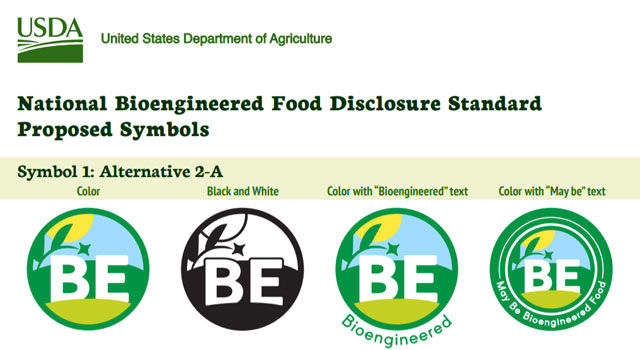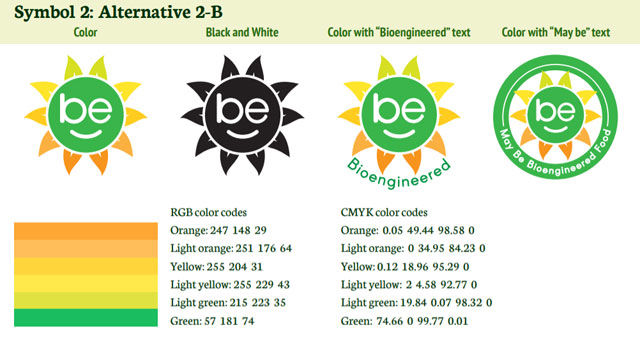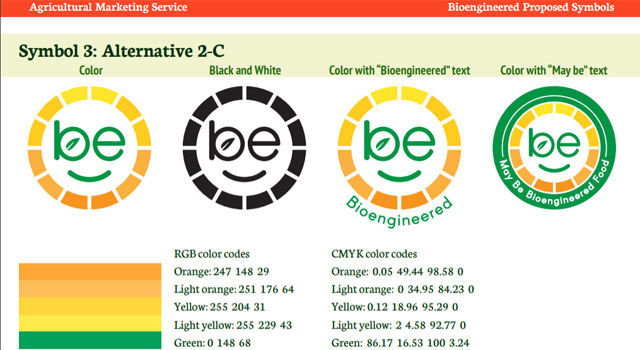WASHINGTON — The public has one more day to comment on a set of proposed labels that will soon grace packages of food containing genetically modified organisms (GMOs).
And so far, more than 9,000 Americans have weighed in.
The labels from the United States Department of Agriculture come nearly two years after President Barack Obama signed a federal labeling bill into law in 2016. Under the law, food manufacturers are required to alert consumers if a product is made using GMOs by 2020.
For years, labeling supporters have argued that consumers have a right to know what’s in their food, while opponents claim labels may unnecessarily scare shoppers, despite studies concluding that GMOs are safe.
Recent research from Vermont’s 2014 labeling law, however, found that GMO transparency didn’t lead to total consumer abandonment. In some cases, “it may have boosted consumer confidence,” The Atlantic reports.
Now, the battle lies in the label.
In May, the USDA released three different options, each with four variations. On all of them, the term “genetically modified” is replaced with “bioengineered.” Some contain color, some are black and white, some have words, others are just an icon.



“There’s a lot of labeling on food already, but given that this is something that’s going to be required on any food that’s genetically modified, it has the ability to have a pretty significant impact on what consumers see when they’re shopping for foods and beverages,” said Alexandra Lewin-Zwerdling, vice president for research and partnerships at the International Food Information Council Foundation (IFIC).
So what are people’s reactions to the labels?
IFIC recently surveyed 1,002 Americans ages 18 to 80 on their attitudes, perspectives and concerns related to the proposed labels. The group found that the majority of those surveyed preferred the packages that contained both the logo and the text explaining the “BE” (bioengineered) in the middle of the icon.
“The logo alone, [for] the majority of consumers, regardless of which logo, felt like it wasn’t enough information, but when you have the logo, plus the words, ‘bioengineered,’ or, ‘may be bioengineered,’ underneath, the majority of consumers felt like that was the right amount of information,” Lewin-Zwerdling said.
The survey also found that consumers felt more comfortable with the “sun” logo, and less so with the “plant” logo. Another take-away: Consumers do not want to go elsewhere, such as a website or QR code printed on the package, to access information about the contents of their food. (Including a QR code in place of a label is one choice that’s being considered.)
“Overwhelmingly, consumers want the disclosure on the food packaging itself — whether it’s a symbol and a visual representation or a text on a food package. Those were far and away the top two desired methods of disclosure, when compared to, say, text messages, a website, a phone number or even an electronic or digital link,” Lewin-Zwerdling said.
There are some exceptions to the labeling law, including foods whose traits are manipulated through RNA interferences. Meat and dairy that comes from animals raised on genetically engineered foods are also exempt from being marked as so.
The new labels on food containing GMOs will come out about the same time as the revamped nutrition facts panel, which will have increased type size and further explanation of often misunderstood categories.
“So as consumers navigate the supermarket, there will be a number of updates to the food packages that they see,” Lewin-Zwerdling said.
View the USDA proposed labels and enter your comments before 11:59 p.m. ET on July 3.








